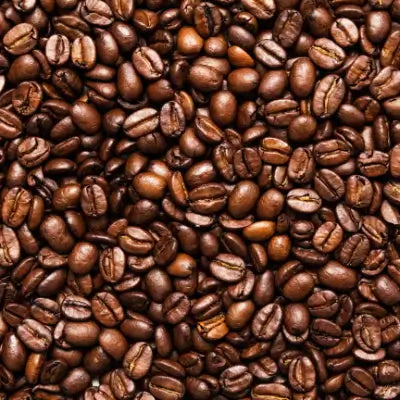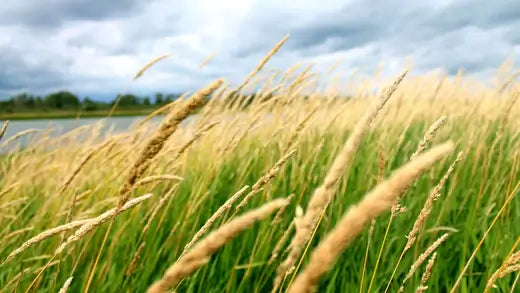Many people believe it's a good idea to plant in the shade.
It will be challenging, or plants may not even flourish. There's always a tiny area next to the shed under trees or a shaded area that feels neglected and unloved because of the lack of sunlight.
Shady or partially shaded places aren't easy to grow plants. Particularly when you're trying to plant sun-loving perennials, it's okay for all perennials to have the full-time sun to flourish. The blossoms and leaves that grow alongside shade perennials could take over less bright spaces with color all year. With this list, you can find the answer to those areas. In this article, we've put together our top five shade-loving perennials, which can flourish and lighten up any dark space.
Everyone loves a garden filled with vibrant and vivid flowers. However, shady gardens, too, need some love. These shade perennials are stunning with beautiful foliage colors and delicate exotic flowers. Some have names that are irresistibly cool too!
Before we introduce you to the best shade-loving perennial plants to plant in the garden of your dreams, it's crucial to clarify what "shade" really means when it comes to your garden.
Although shade might seem like an obstacle to vibrant gardening plants, it isn't. Sure, your palette of plants might not be as dynamic as in a sunny garden, but there are tons of wonderful shade-loving perennials which bloom all year round brightly.
Gardeners who are shade-loving are often advised to concentrate on colorful or variegated foliage plants if they desire many colors for their landscapes. While having different shades and textures of foliage will undoubtedly add a bit of color to a shady garden, they aren't the only choice.
Typically, conditions for shade can be classified into two types: partial and complete.
Partly shade-loving perennials thrive best when they're shaded from the sun in midday, when sunlight is peak or positioned in a location where the sun is shaded, maybe in the shade of small shade trees or under a pergola or trellis.
Flowering plants bloom in full shade and thrive in regions with no direct light; however, they get some sun through reflected or blocked light. Full shade zones are usually located under massive trees or on the north-facing side of buildings. Take, for instance, the five flowering shade perennials listed below.
Blood Root
Bloodroot is a North American native perennial species named after its most captivating characteristic. If someone cuts through this plant, it will release a crimson liquid that looks like blood.
In nature, bloodroot is found in clearings, where sunlight is reflected off on the floor of forests. It thrives in rich organic matter.
When you reproduce its ideal semi-shade conditions, it's a pleasant plant enriched with woody and moderately moist soils. It is drought-resistant, disease resistant, and durable.
Every bloodroot plant has five to nine leaves with well-defined, round teeth. The leaves are tiny, typically around 4 to 6 inches in length.
The flowers bloom during the early Spring. Each bloom has between eight and twelve gossamer petals. Like the leaves, the flowers are small, three inches wide at the highest. The flower centers are sunny and yellow. Despite this gorgeous plant's small size, the springtime color is worthy of a spot in a garden with shade.
Great White Trillium
The Great White Trillium is an imposing native species with a striking white flower that is drought-resistant and cold-tolerant. It blooms reliably in the Spring every year and even in harsh climates cold to other species. But it also thrives in warmer temperatures.
Early explorers and settlers noticed several trillium species, including the grandiflorum, ranging from New England's frigid climate to the southeast. It's an excellent choice for semi-shade plants in nearly every USDA cultivating zone.
Trillium grandiflorum develops from a light, reddish-green and smooth stem, reaching an average height of 2 to 3 feet. It is a stunning plant to be planted in that middle section of the border, with its early spring blooms.
The deep leaf shape is oval and has a long spear at the tip. They can grow to six inches and are arranged the plant into attractive clusters. This foliage offers a shaded place for small mammals, birds, and insects.
The vibrant white flower has three petals and hence the name. The petals overlap at the base and get as large as 4 inches each, making an impressive and striking flower that blooms in Spring's middle.
Partridgeberry
Partridgeberry is a perennial that grows low. The plant thrives in highly shaded, dense woodlands.
Partridgeberry is an evergreen creeper that forms mat-like whorls on the forest floor. The stems are smooth at the growth tip and possess the tiniest "hairs."
As the stems get older, they reproduce and spread. They develop offshoots in pairs or singly from the nodes below the previous year's fruit. After reproduction, branch stems appear.
The berry of partridge gives small, white, fragrant flowers during the late Spring and summer. Red appears when the flowers have finished and the berries are elongated. Partridgeberry fruit can be eaten, so you can gather the berries and use them to make ice cream or jam.
If you're researching shade plants for your garden, you may be able to find partridgeberry identified under the following name: Squaw berry, Two-eyed berry, Running fox, and Partridge berry. All of these refer to one plant, Mitchella repens. No matter what name you give it, you'll be able to delight in the deep shades of the leaves and those clustered berries.
Fan Clubmoss
Fan clubmoss's name comes because of its distinctive, unique appearance. Diphasiastrum Digiatum, also known as fan clubmoss, is a moss species growing in the shadiest ecosystems.
This moss is a long-lived perennial plant with leaves that resemble tiny clubs. The leaves exhibit a fascinating smooth texture and have an appearance that resembles scales. They're lance-shaped and have sharp, sharp points at the top.
You may come across these small-growing plants in coniferous and oak forests. Fan clubmoss covers the floor of heavily wooded forests, creating the appearance of tiny cedar trees in some of the most unusual locations.
It also grows happily in shady places in coastal regions. Most of the time, this plant is found in areas of temperate climates in North America. It's possible to get great results if you keep the moss inside a fully shaded location.
Goat's Beard
Goat's beard grows naturally in filtered sunlight or entire sun areas. The habitat that is native to Aruncus dioicus is an open woodland clearing that is rich in organic matter and constant water (without any sogginess! ).
If you add the goat's beard plant in your yard, it can be a stunning display. The goat's beard is an attractive focal point that attracts interest due to its majestic size and signature plume.
The dusky Azure butterfly is a scarce sight. It depends on the goat's hair plant in its role as the host of its larvae. If there isn't a lot of goat's beard, the dark Azure cannot lay eggs. It relies on the plant's nectar and thick, dense leaves to shield eggs and caterpillars emerging from birds that hunt for predators.
The dusky azure butterflies are elusive and scarce; however, when they search for new habitats, they can be found in the plant Aruncus dioicus may help. At the very least, it's worthwhile to help save the species.

















































